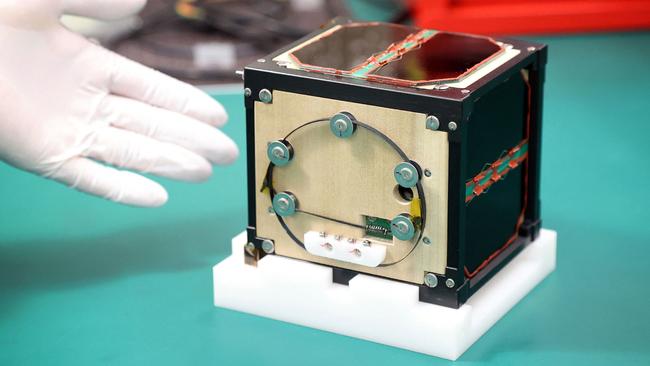Japan launches the first wooden satellite into space
The world’s first wooden satellite has been launched into space, marking the debut of a technology intended to reduce space junk.

The world’s first wooden satellite has been launched into space, marking the debut of a technology intended to reduce space junk and the erosion of the ozone layer.
LignoSat, which is made of magnolia wood and is about the size of a coffee mug, is being carried by a SpaceX rocket to the International Space Station, from where it will be put into orbit 4000km above the Earth.
Created by a team from Kyoto University and the commercial company Sumitomo Forestry, LignoSat is the result of a successful experiment in 2022 in which samples of wood were exposed to the rigours of space for nine months on the ISS. Its creators hope it will open the door for widespread use of wood in space technology.
Takao Doi, a Japanese astronaut who has flown on the space shuttle and is now a professor at Kyoto University, said: “With timber, a material we can produce by ourselves, we will be able to build houses, live and work in space for ever.”
Wood does not burn in space because there is no oxygen, and the absence of micro-organisms means it does not rot. It has proven unexpectedly resistant to extremes of temperature, and its structure does not change in a zero-gravity vacuum.
“Lumber’s fragility and combustibility might seem counterintuitive,” the university said. “Therein lies the rationale for wood: as a natural, economical, carbon-based material, its production is considerably more sustainable than advanced alternatives and its disposal – especially when dropped from orbit into the upper atmosphere – is complete and without harmful by-products.”
Aluminium, the metal used to build satellites, burns up to form aluminium oxide – a pollutant capable of damaging other space vehicles and potentially the ozone layer. A wooden satellite would burn to ash when re-entering the atmosphere. As wood is more easily penetrated by radio waves, the satellite’s communication equipment can be carried inside the magnolia shell.
THE TIMES


